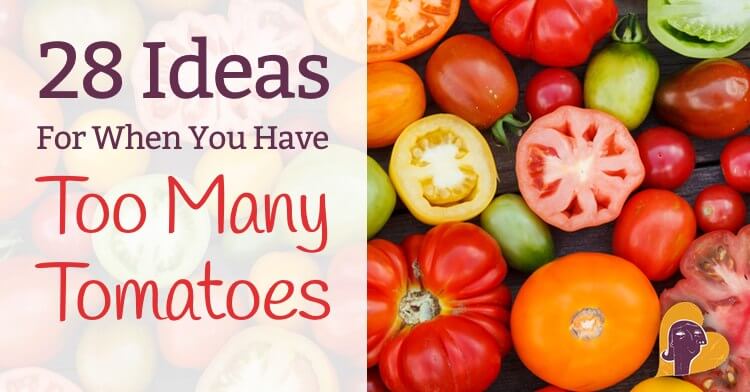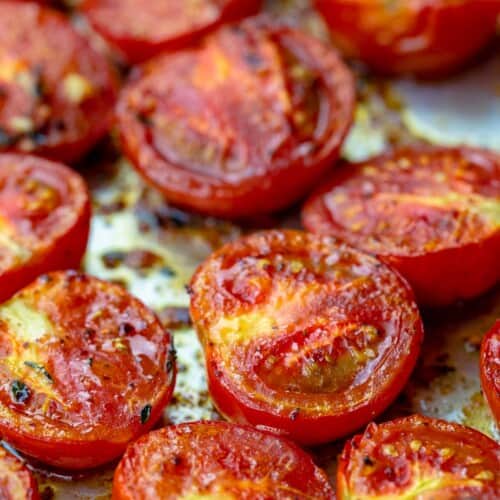Turn extra tomatoes into sauces, salsas, or preserves. Share or donate to friends, family, and local food banks.
Tomatoes often ripen all at once, leaving gardeners with an abundant harvest. Transforming them into sauces or salsas is an excellent way to preserve their freshness. Homemade tomato sauce can be a base for many dishes, providing rich flavors. Salsa, on the other hand, is a versatile condiment that complements various meals.
Another option is making tomato preserves or jams, perfect for spreading on bread. Sharing with friends, family, or donating to local food banks ensures no tomatoes go to waste. These methods help you enjoy your garden’s bounty throughout the year while reducing food waste.
Canning And Preserving
Fresh salsa is a great way to use extra tomatoes. Chop tomatoes, onions, and peppers. Add some cilantro and lime juice. Mix all ingredients in a bowl. Add salt and pepper to taste. Store the salsa in jars. Keep them in the fridge for a few days. You can also can the salsa for longer storage. This process will keep it fresh for months.
Homemade tomato sauce is delicious. Start by boiling tomatoes to remove the skin. Crush the peeled tomatoes in a pot. Add garlic, onions, and herbs. Let the sauce simmer for hours. Stir occasionally to prevent burning. Once thickened, pour the sauce into jars. Seal them tightly. Store in a cool, dark place. Your homemade sauce will last for months.

Credit: www.mamanatural.com
Freezing Tomatoes
Boil water in a big pot. Drop tomatoes into the boiling water for 30 seconds. Remove tomatoes and put them in ice water. The skins will peel off easily. Cut tomatoes into pieces or leave them whole.
Dry the tomatoes well before freezing. Place them in freezer bags or containers. Label bags with the date. Store in the freezer for up to six months. For best flavor, use them within three months.
Making Tomato Paste
Start with fresh tomatoes. Wash them well. Remove the stems and cores. Chop them into small pieces. Place the pieces in a large pot. Cook over medium heat. Stir often to avoid burning. Let the tomatoes break down. This takes about 30 minutes.
Once soft, use a blender to puree the mixture. Pour the puree back into the pot. Cook on low heat. Stir every 10 minutes. Let the mixture thicken. This takes about 2 hours. Once thick, let it cool. Transfer to jars or containers.
Refrigerate the tomato paste. Use within a week. For longer storage, freeze it. Spoon paste into ice cube trays. Freeze until solid. Transfer cubes to a freezer bag. Store in the freezer. Use as needed.
Drying Tomatoes
Preserve extra garden tomatoes by drying them. This method enhances flavor and extends shelf life. Simply slice, season, and sun-dry or use a dehydrator.
Sun-drying Technique
Sun-drying tomatoes is easy. Start by slicing the tomatoes thinly. Place them on a clean tray. Add a little salt on top. Put the tray in a sunny spot. Turn the slices every day. Make sure they dry evenly. After a few days, the tomatoes will be dry. Store them in an airtight container. This keeps them fresh for a long time.
Oven-drying Tips
Oven-drying tomatoes is quicker. Preheat the oven to 200°F (93°C). Slice the tomatoes thinly. Lay them on a baking sheet. Sprinkle a bit of salt. Place the sheet in the oven. Keep the oven door slightly open. This lets moisture escape. Check the tomatoes every hour. They should be dry in about 6-12 hours. Store in an airtight container once done.
Tomato-based Soups
Tomato soups are a great way to use extra tomatoes. Try making a classic tomato basil soup. You can also make creamy tomato soup with fresh cream. Add some croutons for a crunchy texture. Tomato bisque is another delicious option. These recipes are simple and tasty.
Freeze tomato soups to enjoy later. Pour the soup into freezer-safe containers. Leave some space at the top. Label the containers with the date. Soups can last up to three months in the freezer. Thaw the soup in the fridge overnight. Heat it up on the stove and enjoy.

Credit: www.themediterraneandish.com
Creating Tomato Juice
Use a blender to make smooth tomato juice. Chop the tomatoes into small pieces. Place them in the blender. Blend until smooth. Strain the juice to remove seeds and skin. This makes the juice taste better.
You can also use a juicer machine. Cut the tomatoes into halves. Put them in the juicer. The machine will separate the juice from the pulp.
To make the juice tastier, add salt and pepper. You can also mix in some lemon juice. This adds a fresh flavor. For a spicy kick, add a dash of hot sauce.
Herbs like basil or parsley can make the juice more flavorful. Chop them finely and stir into the juice.
Tomato-based Condiments
Homemade ketchup is a great way to use extra tomatoes. Start by chopping the tomatoes and cooking them with onions, garlic, and spices. After they become soft, blend them into a smooth paste. Simmer the mixture until it thickens. Add vinegar, sugar, and salt for flavor. Store the ketchup in sterilized bottles. Homemade ketchup tastes much better than store-bought.
Tomato jam is sweet and tangy. First, peel and chop the tomatoes. Combine them with sugar, lemon juice, and spices. Cook the mixture until it thickens into jam. Stir often to prevent sticking. Pour the hot jam into sterilized jars. Seal the jars and let them cool. Tomato jam is great on toast or as a sauce.
Gardening With Tomatoes
Saving tomato seeds is easy. Cut a ripe tomato in half. Scoop out the seeds and pulp. Place them in a jar with water. Let it sit for a few days. Stir the mixture daily. The good seeds will sink. Pour off the bad seeds and pulp. Rinse the good seeds. Spread them on a paper towel to dry. Store dried seeds in a cool, dry place.
Extra tomatoes make great compost. Chop the tomatoes into small pieces. Add them to your compost pile. Mix in dry leaves or straw. This helps balance moisture. Turn the pile weekly. The tomatoes will break down quickly
. Rich compost will be ready in a few months. Use it to nourish your garden soil.

Credit: www.pinterest.com
Frequently Asked Questions
What Can I Do With Extra Tomatoes?
You can make sauces, salsas, or soups. Dry them for long-term storage. Use them in salads and sandwiches.
How Do I Store Surplus Tomatoes?
Store ripe tomatoes in a cool, dry place. For long-term storage, freeze, can, or dry them.
Can I Freeze Fresh Tomatoes?
Yes, you can freeze fresh tomatoes. Blanch them first, remove skins, and store in airtight containers.
What Are Some Recipes For Extra Tomatoes?
Try making tomato soup, marinara sauce, or salsa. Use them in salads, sandwiches, or roasted dishes.
Conclusion
Transform your extra tomatoes into delicious sauces, salsas, and soups. Preserve them by canning, drying, or freezing. Get creative with recipes and share your bounty with friends. Utilizing your garden’s abundance is rewarding and sustainable. Enjoy the flavors of your garden all year round.
Happy gardening and cooking!




